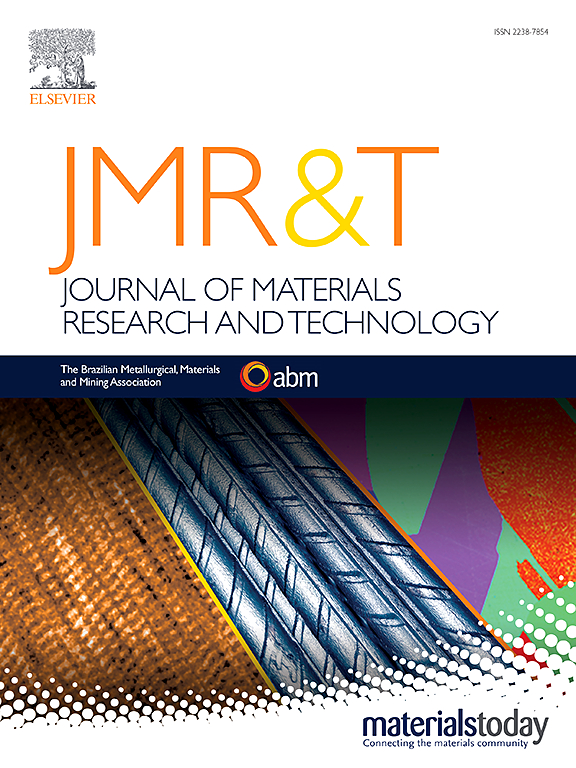Analysis of texture evolution and variant selection during α→β→α phase transformation of TA1 pure titanium sheet
IF 6.6
2区 材料科学
Q1 MATERIALS SCIENCE, MULTIDISCIPLINARY
Journal of Materials Research and Technology-Jmr&t
Pub Date : 2025-06-09
DOI:10.1016/j.jmrt.2025.06.060
引用次数: 0
Abstract
The texture of titanium and titanium alloy has an important influence on its properties, and it is difficult to eliminate the strong bimodal texture of titanium and titanium alloy by traditional rolling process and recrystallization annealing. The texture distribution of titanium and titanium alloy can be changed theoretically by α→β→α phase transformation annealing, but the texture strengthening phenomenon is usually caused by texture memory effect. In this study, The TA1 sheet with 80 % cold rolling deformation was annealed at 500 °C for 2 h and 850 °C for 2 h under different recrystallization degrees, and then subjected to a second annealing at 1100 °C for 10 min. XRD, EBSD and confocal laser microscopy were used to observe the microstructure and texture of TA1 pure titanium sheets and the migration and merging of β phase at high temperature. Furthermore, an extended annealing treatment at 1100 °C for 3 h was conducted for the sheets annealed at 500 °C for 2 h it was found that α grains with different initial textures produce different β grain orientation during α→β phase transformation, which alters the subsequent β grain texture and results in different α-phase variant orientations upon β→α cooling., and the texture strengthening effect of 500°C-2h annealing is significantly inhibited.
TA1纯钛板α→β→α相变织构演变及变异选择分析
钛及钛合金的织构对其性能有重要影响,传统的轧制工艺和再结晶退火难以消除钛及钛合金强烈的双峰织构。α→β→α相变退火理论上可以改变钛及钛合金的织构分布,但织构强化现象通常是由织构记忆效应引起的。本研究将冷轧变形量为80%的TA1板材分别在500℃和850℃下退火2 h和850℃下不同再结晶程度退火2 h,然后在1100℃下退火10 min。利用XRD、EBSD和激光共聚焦显微镜观察了TA1纯钛板材的显微组织和织构以及β相在高温下的迁移和合并。此外,对500℃退火2 h的薄片进行1100℃延长退火3 h,发现不同初始织构的α晶粒在α→β相变过程中产生不同的β晶粒取向,从而改变了后续的β晶粒织构,导致β→α冷却时α相变取向不同。, 500℃-2h退火的织构强化效果明显受到抑制。
本文章由计算机程序翻译,如有差异,请以英文原文为准。
求助全文
约1分钟内获得全文
求助全文
来源期刊

Journal of Materials Research and Technology-Jmr&t
Materials Science-Metals and Alloys
CiteScore
8.80
自引率
9.40%
发文量
1877
审稿时长
35 days
期刊介绍:
The Journal of Materials Research and Technology is a publication of ABM - Brazilian Metallurgical, Materials and Mining Association - and publishes four issues per year also with a free version online (www.jmrt.com.br). The journal provides an international medium for the publication of theoretical and experimental studies related to Metallurgy, Materials and Minerals research and technology. Appropriate submissions to the Journal of Materials Research and Technology should include scientific and/or engineering factors which affect processes and products in the Metallurgy, Materials and Mining areas.
 求助内容:
求助内容: 应助结果提醒方式:
应助结果提醒方式:


